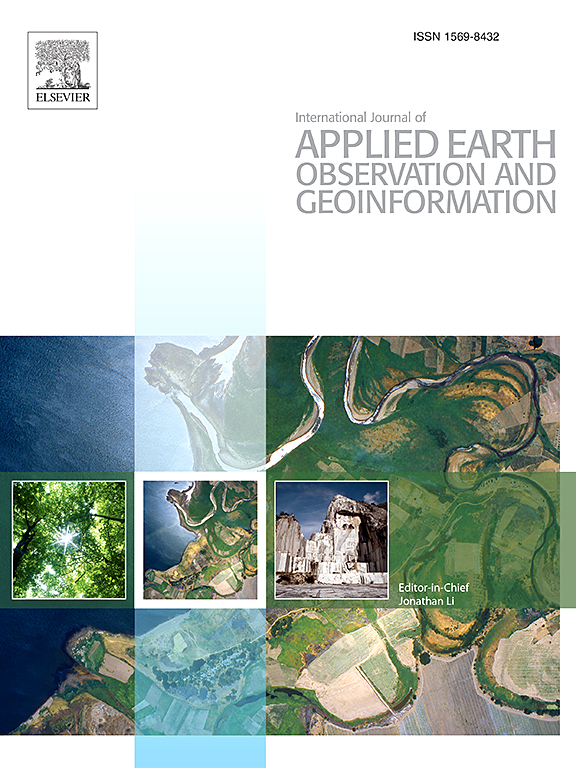DMRS: Long-tailed remote sensing recognition via semantic-aware mixing and diversity experts
IF 7.6
Q1 REMOTE SENSING
International journal of applied earth observation and geoinformation : ITC journal
Pub Date : 2025-06-13
DOI:10.1016/j.jag.2025.104623
引用次数: 0
Abstract
Long-tailed class distributions pose a significant challenge in remote sensing scene recognition, where certain scene categories appear far less frequently than others. However, existing long-tailed learning approaches often overlook the unique spatial hierarchies and contextual semantic relationships inherent in remote sensing imagery, limiting their effectiveness in this domain. To address this, we propose Diversity-Mix Remote Sensing (DMRS), a foundation model-based framework designed for long-tailed remote sensing scene recognition. DMRS introduces two key innovations: (1) multi-low-rank adaptation diversity experts, which achieves balanced classification by specializing different experts for different regions of the class distribution, and (2) a semantic-aware mixing strategy, which incorporates textual semantic information typically unused in traditional classification to enhance perception across diverse remote sensing scenes. Extensive experiments on NWPU-RESISC45 and RSD46-WHU datasets demonstrate the effectiveness of DMRS, achieving 6.7% and 2.0% improvements in overall accuracy, respectively, while significantly enhancing the recognition of tail classes. These results highlight the potential of DMRS in tackling long-tail challenges in remote sensing scene classification. The data and codes used in the study are detailed in: https://github.com/wyfhbb/DMRS.
DMRS:基于语义感知混合和多样性专家的长尾遥感识别
长尾类分布对遥感场景识别提出了重大挑战,其中某些场景类别出现的频率远低于其他场景类别。然而,现有的长尾学习方法往往忽略了遥感图像中独特的空间层次和上下文语义关系,限制了其在该领域的有效性。为了解决这个问题,我们提出了一种基于基础模型的长尾遥感场景识别框架——多样性混合遥感(DMRS)。DMRS引入了两个关键创新:(1)多低阶自适应多样性专家,通过对类别分布的不同区域分配不同的专家来实现平衡分类;(2)语义感知混合策略,将传统分类中通常不使用的文本语义信息融合在一起,增强对不同遥感场景的感知。在NWPU-RESISC45和RSD46-WHU数据集上的大量实验证明了DMRS的有效性,总体准确率分别提高了6.7%和2.0%,同时显著增强了对尾类的识别。这些结果突出了DMRS在解决遥感场景分类中长尾挑战方面的潜力。本研究使用的数据和代码详见:https://github.com/wyfhbb/DMRS。
本文章由计算机程序翻译,如有差异,请以英文原文为准。
求助全文
约1分钟内获得全文
求助全文
来源期刊

International journal of applied earth observation and geoinformation : ITC journal
Global and Planetary Change, Management, Monitoring, Policy and Law, Earth-Surface Processes, Computers in Earth Sciences
CiteScore
12.00
自引率
0.00%
发文量
0
审稿时长
77 days
期刊介绍:
The International Journal of Applied Earth Observation and Geoinformation publishes original papers that utilize earth observation data for natural resource and environmental inventory and management. These data primarily originate from remote sensing platforms, including satellites and aircraft, supplemented by surface and subsurface measurements. Addressing natural resources such as forests, agricultural land, soils, and water, as well as environmental concerns like biodiversity, land degradation, and hazards, the journal explores conceptual and data-driven approaches. It covers geoinformation themes like capturing, databasing, visualization, interpretation, data quality, and spatial uncertainty.
 求助内容:
求助内容: 应助结果提醒方式:
应助结果提醒方式:


